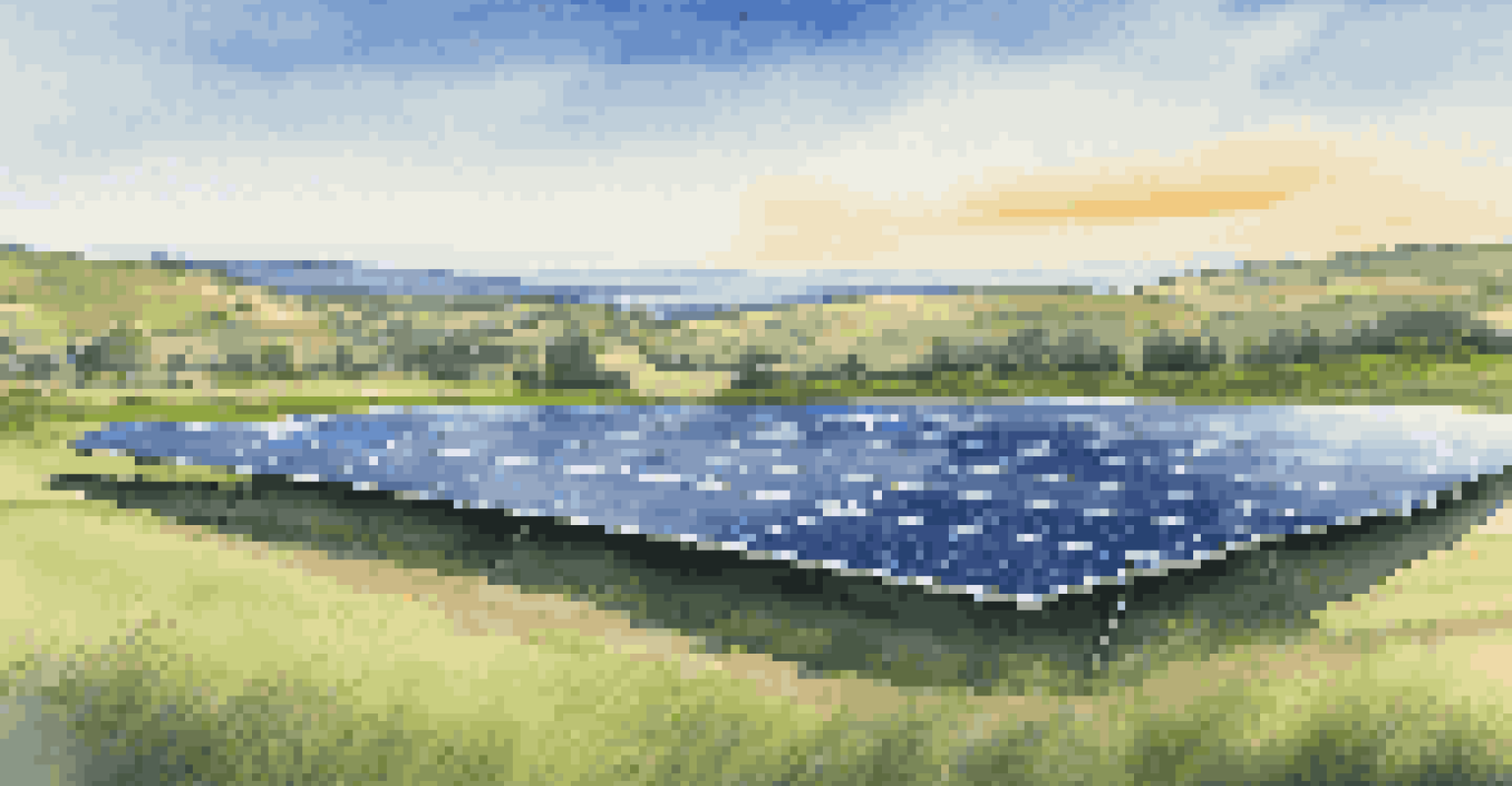Understanding the Renewable Energy Value Chain

What is the Renewable Energy Value Chain?
The renewable energy value chain refers to the various stages involved in producing and delivering renewable energy. This includes everything from resource extraction to energy generation, distribution, and consumption. Each step plays a crucial role in ensuring that clean energy reaches consumers effectively and efficiently.
Renewable energy is not a dream of the future; it is a reality we can build today.
To better understand this concept, think of the value chain as a relay race, where each runner (or stage) must pass the baton (or energy) to the next. If one runner falters, the overall performance suffers. Similarly, a disruption at any point in the renewable energy value chain can impact the entire system.
Ultimately, grasping the value chain helps stakeholders identify opportunities for improvement and innovation, which can lead to a more sustainable energy future.
Key Components of the Renewable Energy Value Chain
The renewable energy value chain is typically divided into several key components: resource assessment, technology development, energy generation, transmission, and consumption. Each of these components is interconnected and relies on the others to function properly. For instance, advancements in technology can enhance energy generation efficiency.

Think of this as a well-tuned orchestra, where each musician plays a specific instrument, contributing to a harmonious performance. In the renewable energy sector, if one component is out of sync, it can lead to inefficiencies and diminished overall performance.
Renewable Energy Value Chain Overview
The renewable energy value chain encompasses all stages from resource assessment to consumption, ensuring clean energy reaches consumers effectively.
Understanding these components is essential for anyone looking to invest in or work within the renewable energy sector, as it allows for a comprehensive view of how energy flows from production to consumption.
Resource Assessment: The First Step in the Chain
Resource assessment is the initial phase of the renewable energy value chain, where potential sites for energy generation are evaluated. This involves analyzing factors like wind patterns for wind energy or sunlight exposure for solar power. Accurate assessments are critical for determining the feasibility of a project.
The transition to renewable energy is not just a choice, it's a necessity for a sustainable future.
Imagine a treasure map; without pinpointing where the treasure lies, finding it becomes nearly impossible. In renewable energy, effective resource assessment is akin to that map, guiding developers to the best locations for harnessing energy.
Investing time and resources in this phase can significantly enhance the likelihood of project success and sustainability.
Technology Development in Renewable Energy
Technology development is crucial in the renewable energy value chain, as it drives innovation and efficiency. This includes creating advanced solar panels, wind turbines, and energy storage systems. Continuous improvements in technology can lead to reduced costs and increased energy output.
Think of technology development as the evolution of smartphones; each new model brings enhancements that improve user experience and functionality. Similarly, advancements in renewable energy technologies make clean energy more accessible and affordable.
Key Components of the Chain
Understanding components like technology development and energy generation is crucial for optimizing efficiency and driving innovation in renewable energy.
As technology evolves, it opens new doors for renewable energy applications, making it vital for stakeholders to stay informed and adaptable.
Energy Generation: Turning Resources into Power
Energy generation is the process of converting renewable resources into usable electricity. This can occur through various means, such as solar panels converting sunlight into electricity or wind turbines harnessing wind energy. This stage is where the magic happens, transforming natural resources into power for homes and businesses.
Picture a chef preparing a meal; the ingredients (renewable resources) are transformed into a delicious dish (electricity) through skill and technique. In the energy landscape, effective generation techniques are essential for providing reliable power.
Incorporating diverse energy generation methods ensures a stable supply of renewable energy, catering to different consumer needs.
Transmission: Delivering Energy to Consumers
Once energy is generated, it must be transmitted to consumers through a network of power lines and infrastructure. This stage involves significant planning and investment to ensure that electricity can travel long distances without losing efficiency. Efficient transmission is crucial for delivering renewable energy to urban centers and remote areas alike.
Imagine a delivery service; if packages aren’t delivered on time, customers become frustrated. Similarly, effective energy transmission ensures that consumers receive the electricity they need when they need it.
Future Trends in Renewable Energy
As demand for renewable energy grows, the value chain must adapt to innovations and consumer behavior for a sustainable energy future.
Improvements in transmission technology can help minimize energy loss and facilitate the integration of renewable sources into the grid.
Consumption: The Final Link in the Chain
Consumption is the final stage of the renewable energy value chain, where energy is used by homes and businesses. This phase is influenced by consumer behavior, energy efficiency practices, and the availability of renewable energy sources. Understanding how consumers utilize energy can help improve strategies for energy distribution.
Think of consumption as the end of a movie; after the credits roll, the audience leaves with a lasting impression. In the energy sector, how consumers engage with renewable energy can shape future demand and investment.

Encouraging mindful consumption and energy-saving practices can enhance the effectiveness of the entire renewable energy value chain.
The Future of the Renewable Energy Value Chain
As global demand for renewable energy continues to rise, the value chain is evolving to meet new challenges and opportunities. Innovations in technology, changes in policy, and shifts in consumer behavior are all shaping the future of renewable energy. Stakeholders must remain agile to adapt to these changes.
Consider the landscape of transportation; electric vehicles are reshaping how we think about travel and energy use. Similarly, the renewable energy value chain is being redefined by emerging trends and technologies.
By fostering collaboration across all value chain components, we can work towards a more sustainable and resilient energy future.